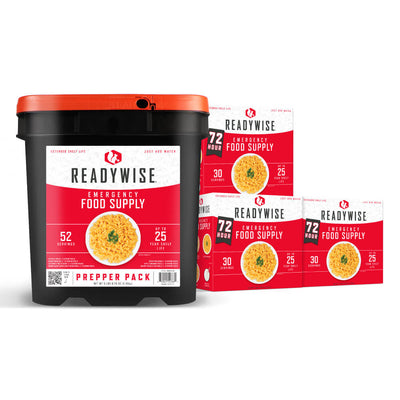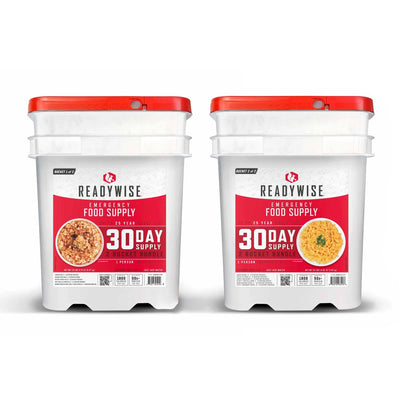Emergency Items That You Need to Have Ready At All Times
While emergency preparedness often involves measures made on an institutional, regional, national, or global level – anyone can take action within the domestic sphere. An emergency can be defined by any number of events, but regardless of the circumstances, it’s always strategic to have items on hand for your peace of mind. The idea is that these items should be both portable and sustainable enough to last until any unprecedented situation that may arise in the future. Here, we have made storing food easy, and all of our emergency items are designed for quick grab and go use and have extended shelf life. Our 120 Serving Breakfast and Entree Buckets make for great base starter kits but we also have nutritious add-ons that can help round out your storage, such as our 120 Serving Fruit Bucket or our 120 Serving Vegetable Bucket. We're just getting started, and so are you.

Read on for more suggestions and categories to simplify the process of preparing your emergency supplies:
Food Tools
We covered how much food you should store for an emergency, and in a similar vein, you should also have the right tools to streamline preparations when you have limited resources on deck. Tools should be convenient and multipurpose – from something as small as can openers to big-ticket items like portable stoves. Some of the best rice cookers that are recommended for lockdowns are also portable and compact in size, but are packed with a number of features. A number of these appliances can double as steamers or slow cookers to allow you to cook a whole meal to sustain your family. Our water filtration bottle is another good item to have on hand, as it is reusable and filters out 99.99% of pollutants for up to a hundred gallons of water.
Medicines
Before you begin stocking your medicine cabinets, throw out anything you can no longer identify or anything past its expiry date. Have a good digital – preferably no-contact – thermometer, good for any age. If you are prone to high blood pressure, there are a number of portable monitors available. Peak-flow meters or pulse oximeters are also great tools for those who suffer from asthma or anyone who just wants to measure their oxygen flow. Ibuprofen is also an effective painkiller and remedy for fever. Keep allergy medication, stomach medicines (for acid reflux, indigestion, and diarrhea), and a standard first-aid kit with dressings and ointments ready for unforeseen ailments. You can search the hashtag ‘#firstaidkit’ on Twitter to direct you to a number of professional sources, each with overlapping first-aid kit components for a clearer picture. Be sure you also have your prescription medications stocked as well. Have a hard copy of the contact numbers for your general practitioner, emergency services, or local pharmacy just in case.
Clothes
You may have a closet full of clothes, but it’s wise to have a pile of garments to turn to in case of emergencies. Start by thinking about the most common climate where you live and have some clothes suitable for that. You can create your emergency wardrobe from there and keep in mind these important layers: a base, insulation, and a shell to keep you weather-proofed. Begin with a moisture-wicking layer like merino wool, which will regulate your body temperature. You can build on that with something made of fleece, wool, or bubble vests or jackets. Your last layer must be a breathable coat that can withstand extreme elements. Footwear should be comfortable and suited for walking. When it comes to other accessories, have a spare pair of gloves, shades, and a hat as well.
Your arsenal of emergency items could include a number of other supplies, from solar-powered radios to LED flashlights, a Swiss-army knife, weather-resistant blankets, and any other item you feel is a necessary addition. You can never be too prepared.
Written by Ruby Hall
















































































